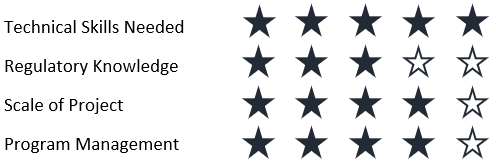Overview
BIP partnered with a leading sustainable energy client to document 32 critical processes across six Lines of Business (LOB). The primary objectives were to enhance transparency, streamline operations, identify discrepancies, and provide comprehensive documentation to enhance transparent decision-making across the organization. This case study highlights the key activities, applied methodologies, and outcomes of this transformative collaboration.
Implementation
Process Documentation and Issue-Tracking: BIP's team engaged directly with our client’s process leads to gain an in-depth understanding of each process within the six LOBs. Our team was tasked with the documentation of a wide range of activities, including finance, budgeting, procurement, and operations. The BIP team created process workflows, charts and implemented procedural documentation for each process. Concurrently, our team assisted our client in implementing an issue-tracking system which played a pivotal role in identifying and articulating existing gaps, which were subsequently closed as part of the revised documentation process. This ensured that each process was documented at the required level of detail.
Transparent Progress Tracking and Reporting: To keep stakeholders informed and engaged, BIP developed a transparent progress-tracking and reporting system. Our team produced weekly presentations that captured critical information derived from the dashboard reports and related metrics. In addition, our team was instrumental in the implementation of the Microsoft Power BI (Business Intelligence) tool which was utilized to highlight high-level project insights and provide executive stakeholders with real-time visibility into the project's progress and outcomes.
Agile Implementation for Rapid Results: Recognizing the short timeframe to complete the work, BIP adopted an agile methodology to navigate through the 32 processes within nine weeks. This approach allowed the team to adapt quickly to evolving requirements, ensuring a seamless progression through each LOB. The commitment to agility proved instrumental in delivering tangible results within the stipulated timeframe.
Efficient Documentation Reviews and Approvals: The implementation of the streamlined documentation process resulted in less than 10% of documents requiring rework after thorough reviews by stakeholders. This remarkably low rework rate highlights BIP's deep understanding of organizational requirements and processes. Our team ensured that the documentation materials were not only accurate but that they fully met our client’s demanding expectations.
Challenges Faced and Overcome:
Several challenges were encountered and successfully mitigated along the way, including the wide range of processes across the six LOBs. However, through effective collaboration and communication with process leads, BIP was able to navigate and understand the intricacies of each process and standardize our deliverables to the greatest degree possible.
The tight timeline of nine weeks required an accelerated pace, which could have potentially compromised the quality of the documentation, but BIP's commitment to agile methodologies ensured that the pace did not compromise the thoroughness of the documentation process. Regular feedback loops and constant communication helped address any emerging challenges promptly.
Ensuring stakeholder engagement and continuous feedback collection represented another challenge, given the large scale of the project. BIP successfully mitigated this challenge by actively involving stakeholders in the process documentation phase, conducting regular formal feedback sessions, and incorporating iterative improvements based on their inputs.
Outcomes and Impact
Enhanced Transparency: The process documentation initiative significantly enhanced transparency across the six LOBs. Stakeholders gained a clear understanding of each process, contributing to a more informed decision-making environment.
Operational Streamlining: The agile implementation approach allowed for the rapid identification and resolution of inefficiencies in the documented processes. As a result, operations were streamlined, leading to increased efficiency and cost-effectiveness.
Issue Identification and Resolution: The integrated issue-tracking system proved invaluable in identifying and addressing critical discrepancies. This proactive approach ensured that potential issues were mitigated before they could impact the operations adversely.
Real-Time Progress Visibility: The transparent progress-tracking and reporting system, coupled with the PowerBI dashboard, provided stakeholders with real-time visibility into the project's progress. This not only fostered trust but also allowed for timely interventions when necessary.
High-Quality Documentation: BIP's streamlined documentation process, combined with efficient reviews and approvals, resulted in high-quality documentation. Less than 10% of documents required rework, attesting to BIP's thorough understanding of organizational requirements and commitment to delivering top-tier results.
Conclusion
In conclusion, the collaboration between BIP and our client demonstrates the value and importance of strategic process documentation. By successfully navigating through 32 processes in just nine weeks, BIP not only met but also exceeded the client's expectations. The outcomes, including enhanced transparency, streamlined operations, and high-quality documentation, underscore the effectiveness of BIP's approach. Our client derived significant value and experienced immediate improvements in their decision-making capabilities, which is a critical success factor in the increasingly competitive market for renewable energy solutions.
About BIP.Monticello
BIP.Monticello Consulting Group is a global management consulting firm supporting the financial services industry through its deep knowledge and expertise in digital transformation, change management, and financial services advisory. Our proven understanding of the competitive forces reshaping business models in capital markets and digital banking helps our clients drive innovative change programs to be more competitive and gain market share in new and existing businesses.










































